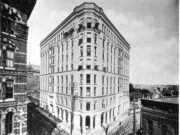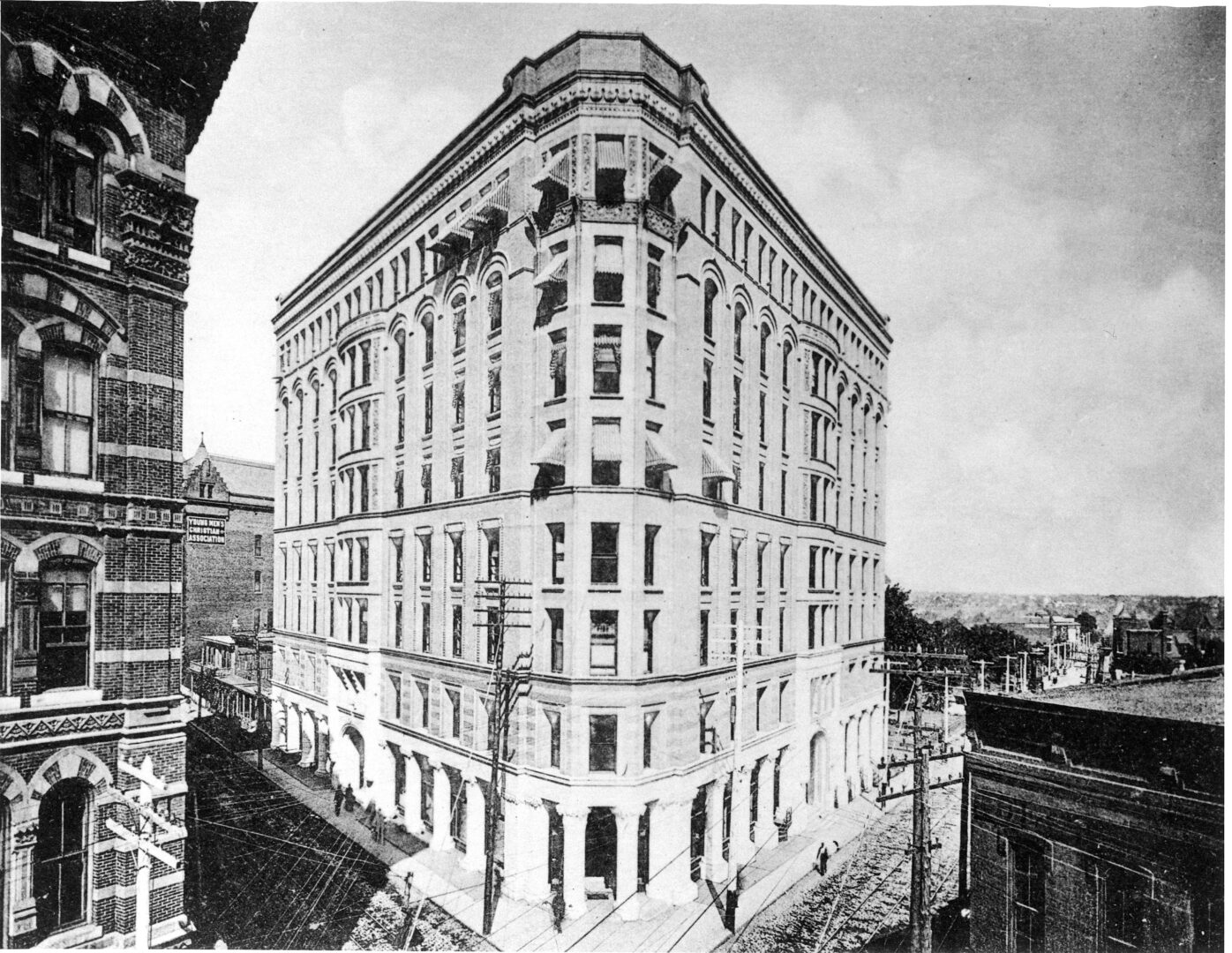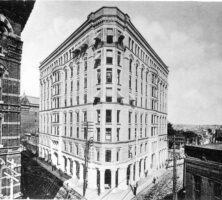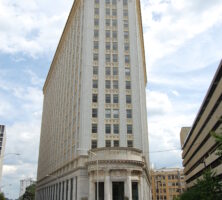Atlanta businessman Joel Hurt made a fortune in real estate, insurance, mining, and streetcars—much of it made possible by labor compelled under the state’s notorious convict lease system.
He was born on July 31, 1850, in Hurtsboro, Alabama, to Lucy Apperson Long and Joel Hurt. After attending Auburn Methodist College in Auburn, Alabama, for one year, he left and enrolled at the University of Georgia in Athens, graduating in 1871 with a degree in civil engineering. He married Annie Bright Woodruff, and they had six children.
In 1871 Hurt secured his first job, with the Atlantic and Pacific Railroad, surveying a line from St. Louis, Missouri, to San Francisco, California. After finishing that assignment, he worked for the Northeastern Railroad, surveying a line in Georgia from Lula to Athens.
Hurt moved to Atlanta in 1875. With his brother, Elisha Fletcher Hurt, he formed E. F. and Joel Hurt, a real estate and insurance firm. The company’s name was changed to Hurt and Low when Elisha left for New York, and James H. Low became Joel’s partner.
After selling Hurt and Low, Hurt organized and managed the Atlanta Building and Loan Association. In 1882 Hurt established the Atlanta Home Insurance Company, acting as its secretary, and in 1889 he organized the United Underwriters Insurance Company, acting as its president. He later merged the two companies and served as president of the new business (which took the name Atlanta Home Insurance Company) from 1906 until 1914, when he sold it to the Fireman’s Fund Insurance Company of San Francisco.
In 1886 Hurt established the East Atlanta Land Company to acquire and develop more than 130 acres east of the city for Atlanta’s first planned suburb. He named the new suburb Inman Park for his friend and business partner Samuel M. Inman. Later that same year Hurt formed the Atlanta and Edgewood Street Railway Company, which was financed through the East Atlanta Land Company. In 1889 Hurt’s railway company initiated the first streetcar line, which ran from downtown along Edgewood Avenue to Inman Park. In 1891 Hurt electrified and consolidated the six streetcar lines in Atlanta, forming the Atlanta Consolidated Street Railway Company. Ernest Woodruff, father of Coca-Cola magnate Robert Woodruff, was vice president and general manager of the company, and Hurt served as president until he sold his interest in 1902 to Henry Atkinson, of Georgia Electric Light Company of Atlanta. Atkinson then formed the Georgia Railway and Electric Company, a precursor to the Georgia Power Company. That same year Hurt organized the Kirkwood Land Company, which bought the northeast section of Atlanta and developed another suburb, Druid Hills.

Courtesy of Historic Preservation Division, Georgia Department of Community Affairs.
In 1895 Hurt expanded his portfolio of business interests to include coal mining, purchasing a group of mines and furnaces in north Georgia that had previously belonged to former governor Joseph E. Brown. Under Brown’s control, the mines were worked by hundreds of African American convicts who labored under deplorable conditions. According to a legislative committee that reviewed operations at the site in 1895, workers lacked adequate clothing, were under threat of starvation, and were regularly subjected to water cure torture.
Remarkably, these conditions continued under Hurt’s ownership. During the years that followed, Hurt purchased the leases of hundreds of Black convicts from brokers who, in Hurt’s own words, were “trading in” the sale of unfree labor procured via the state’s convict lease system. In 1908 a state legislative inquiry confirmed that convicts at Hurt’s mines were regularly brutalized and even murdered—acts of inhumanity that Hurt witnessed first-hand. Hurt and his son were unrepentant when called to testify before the committee, but accounts of cruelty at the mines stirred the conscience of prominent clergy and members of the public. As a result of the protests that followed, state legislators voted to abolish the convict lease system later that year.
Hurt was responsible for the construction of three buildings in Atlanta. The Equitable Building (1892, razed), designed by architect John Wellborn Root, was the first fireproof office building in the South. In 1911 he built the Atlanta Theater, the first fireproof theater building in the South. The Hurt Building, completed in 1926, was the seventeenth-largest office building in the world, and it remains a distinctive Atlanta landmark.
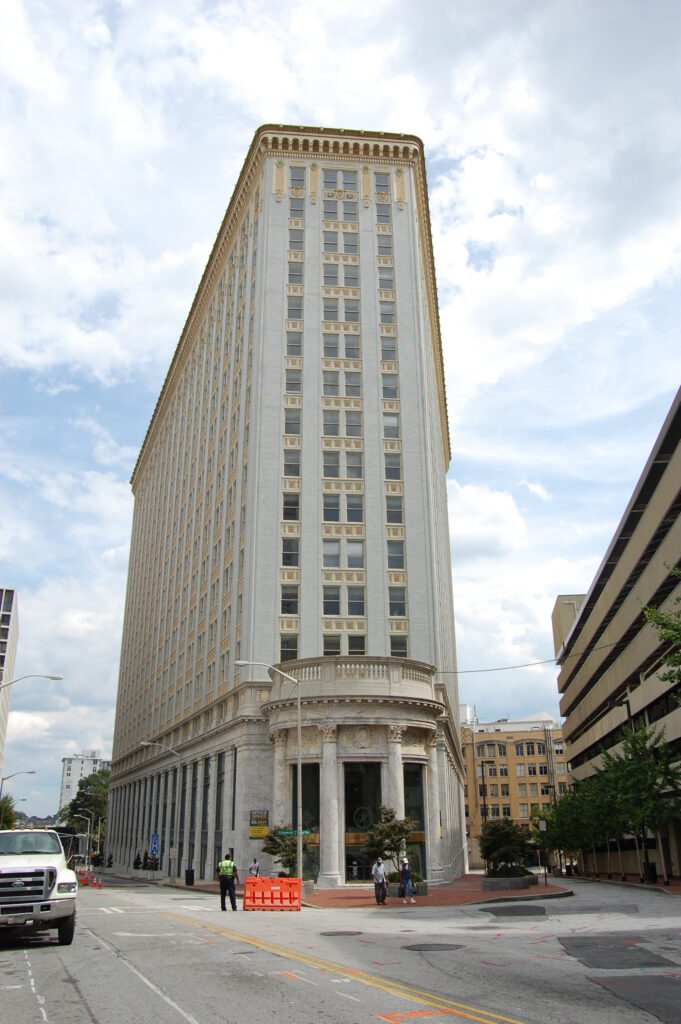
Photograph by Ganeshk
Hurt was one of the incorporators of the Commercial Travelers Savings Bank, which he reorganized in 1893 to form the Trust Company Bank of Georgia. He also owned and was the president of the Pratt Engineering and Machine Company, which built the Cotton States Fertilizer Company in Macon.
Hurt was elected as water commissioner in 1886, 1888, and 1889 and served on the first legal planning commission. He also donated Springvale Park, the centerpiece of Inman Park, to the city. Hurt died on January 9, 1926, in Atlanta and is buried in Oakland Cemetery.


